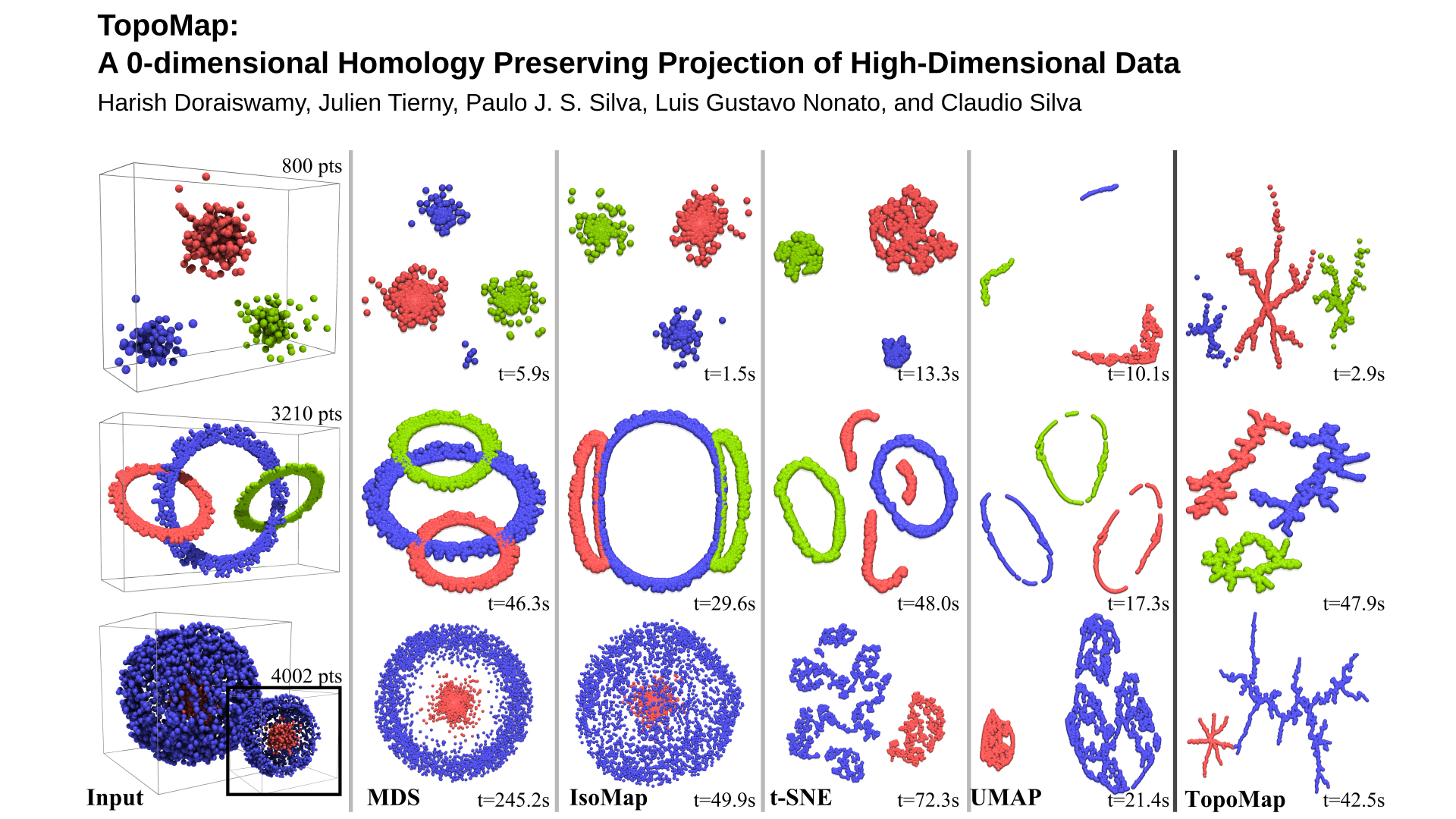TopoMap: A 0-dimensional Homology Preserving Projection of High-Dimensional Data
Harish Doraiswamy, Julien Tierny, Paulo J. S. Silva, Luis Gustavo Nonato, Claudio Silva
External link (DOI)
View presentation:2020-10-29T18:00:00ZGMT-0600Change your timezone on the schedule page
2020-10-29T18:00:00Z

Fast forward
Direct link to video on YouTube: https://youtu.be/2HeB4z_bsOA
Keywords
Topological data analysis, computational topology, high-dimensional data, projection.
Abstract
Multidimensional Projection is a fundamental tool for high-dimensional data analytics and visualization. With very few exceptions, projection techniques are designed to map data from a high-dimensional space to a visual space so as to preserve some dissimilarity (similarity) measure, such as the Euclidean distance for example. In fact, although adopting distinct mathematical formulations designed to favor different aspects of the data, most multidimensional projection methods strive to preserve dissimilarity measures that encapsulate geometric properties such as distances or the proximity relation between data objects. However, geometric relations is not the only interesting property to be preserved in a projection. For instance, the analysis of particular structures such as clusters and outliers could be more reliably performed if the mapping process gives some guarantee as to topological invariants such as connected components and loops. This paper introduces TopoMap, a novel projection technique which provides topological guarantees during the mapping process. In particular, the proposed method performs the mapping from a high-dimensional space to a visual space, while preserving the 0-dimensional persistence diagram of the Rips filtration of the high-dimensional data, ensuring that the filtrations generate the same connected components when applied to the original as well as projected data. The presented case studies show that the topological guarantee provided by TopoMap not only brings confidence to the visual analytic process but also can be used to assist in the assessment of other projection methods.